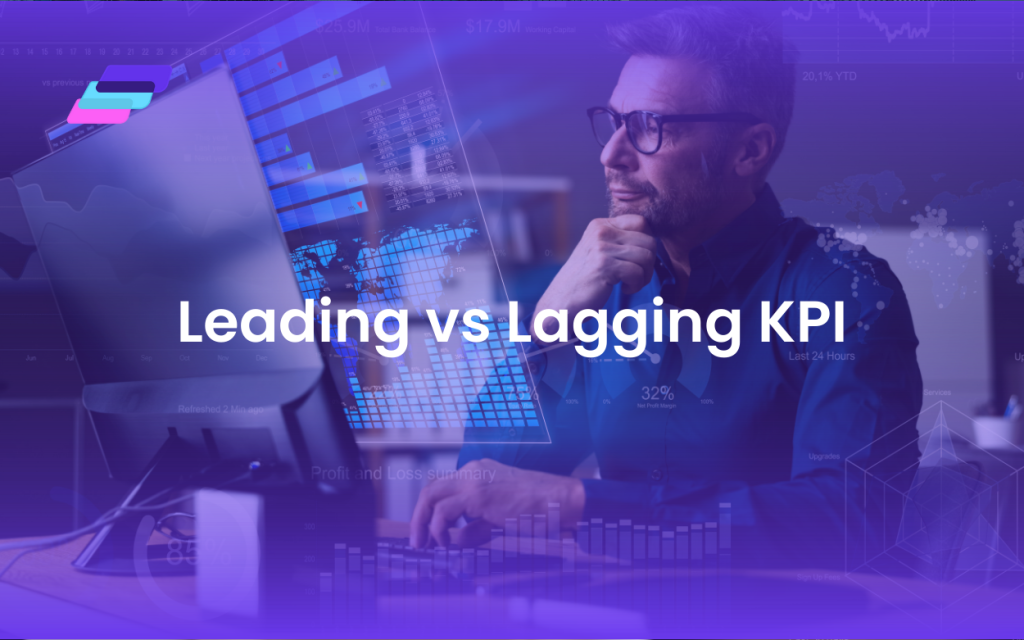Leading vs Lagging KPI

Unlocking Success with OKRs in Business Management
Short intro
In today’s dynamic business environment, organizations strive to stay ahead of the competition and achieve their strategic objectives. To drive growth and success, managers need to effectively measure progress and make data-driven decisions. Key Performance Indicators (KPIs) play a vital role in this process, helping businesses track performance and align their efforts. However, not all KPIs are created equal. Understanding the difference between leading and lagging KPIs is crucial for leveraging the power of OKRs (Objectives and Key Results) in effective business management.
Read the previous article for more context
What are Leading and Lagging KPIs? Leading and lagging KPIs are two distinct types of performance indicators that provide different insights into an organization’s progress. While both are essential, they serve different purposes and require distinct management approaches.
1. Leading KPIs
Leading KPIs are forward-looking metrics that help predict future outcomes and measure activities that drive success. These indicators are proactive, enabling managers to take corrective action and make adjustments before problems arise. Leading KPIs are often associated with operational processes, employee engagement, and customer satisfaction. For instance, in an e-commerce business, the number of website visitors, conversion rates, or customer feedback ratings can be considered leading KPIs. By focusing on these metrics, managers can proactively identify areas of improvement and optimize strategies.

2. Lagging KPIs
Lagging KPIs, on the other hand, are retrospective metrics that measure the outcomes of past actions. These indicators are reactive, providing insights into the results achieved after specific activities or initiatives. Lagging KPIs are typically associated with financial performance, revenue, market share, or customer retention. For example, quarterly sales revenue or net profit margin are lagging KPIs that reflect the outcomes of previous business efforts. While lagging KPIs are crucial for assessing overall performance, they offer limited opportunities for immediate course correction.
The Power of OKRs in Business Management
OKRs provide a powerful framework for setting and achieving goals, aligning teams, and driving accountability within an organization. Combining OKRs with leading and lagging KPIs can significantly enhance business management by fostering a holistic approach to performance measurement. Here’s how:
1. Aligning Objectives and Key Results
OKRs help organizations define clear objectives and measurable key results that contribute to their success. By setting ambitious yet attainable objectives, businesses can align their teams and focus efforts on specific outcomes. Leading KPIs can be used as key results to measure progress towards objectives, providing real-time insights into the effectiveness of ongoing initiatives.
2. Balancing Leading and Lagging KPIs
To achieve a comprehensive view of performance, managers need to strike a balance between leading and lagging KPIs. While lagging KPIs offer a retrospective analysis, leading KPIs provide early indicators of success or areas needing improvement. By leveraging both types of indicators, managers can identify patterns, make informed decisions, and adjust strategies in real-time.
3. Driving Continuous Improvement
OKRs combined with leading KPIs enable businesses to drive continuous improvement. By focusing on leading indicators, teams can identify bottlenecks, experiment with new approaches, and make data-driven adjustments to optimize performance. This proactive approach empowers managers to stay ahead of the curve and adapt swiftly to changing market dynamics.
Conclusion
In the realm of business management, leading and lagging KPIs play distinct roles in measuring performance and driving success. By leveraging the power of OKRs, organizations can align their teams, set ambitious goals, and track progress using a combination of leading and lagging KPIs. This holistic approach enables managers to make informed decisions, drive continuous improvement, and ultimately achieve their strategic objectives. Embracing this framework will undoubtedly position businesses for long-term success in today’s competitive landscape.
Example
Objective: Grow Monthly Recurring Revenue (MRR), in order to secure competitive advantage
Key Result 1: Increase the number of new paid subscriptions from 3500 to 6000
Leading KPI: Increase the number of website visitors >1250 through content marketing
and SEO optimization
Lagging KPI: Track the number of new paid subscriptions acquired
Key Result 2: Improve customer retention rate 68% to 75%
Leading KPI: Increase customer satisfaction score by >10%
Lagging KPI: Reduce customer churn rate <6%
Key Result 3: Expand the target market by launching in two new geographic regions
Leading KPI: Identify at least 5 potential new regions for expansion based on market
research data
Lagging KPI: Measure the number of new customers acquired from the two new regions
Objective: Invest in product usability and user experience in order to maximize customer satisfaction, engagement and loyalty
Key Result 1: Increase the average user session duration from 4 minutes to 5 minutes
Leading KPI: Achieve an average satisfaction rating of 8 out of 10 among users testing
Lagging KPI: Track the average user session duration using analytics
tools
Key Result 2: Improve the mobile app’s app store rating from 4 to 4.5 stars
Leading KPI: Increase the completion rate of user feedback surveys by >25%
Lagging KPI: Measure the improvement of app store reviews by comparing the average
rating score of the previous month
Key Result 3: Reduce the average response time of customer support inquiries to less than 24 hours
Leading KPI: Reduce average ticket resolution time by >25% or more
Lagging KPI: Track the average response time of customer support inquiries and
measure the reduction
